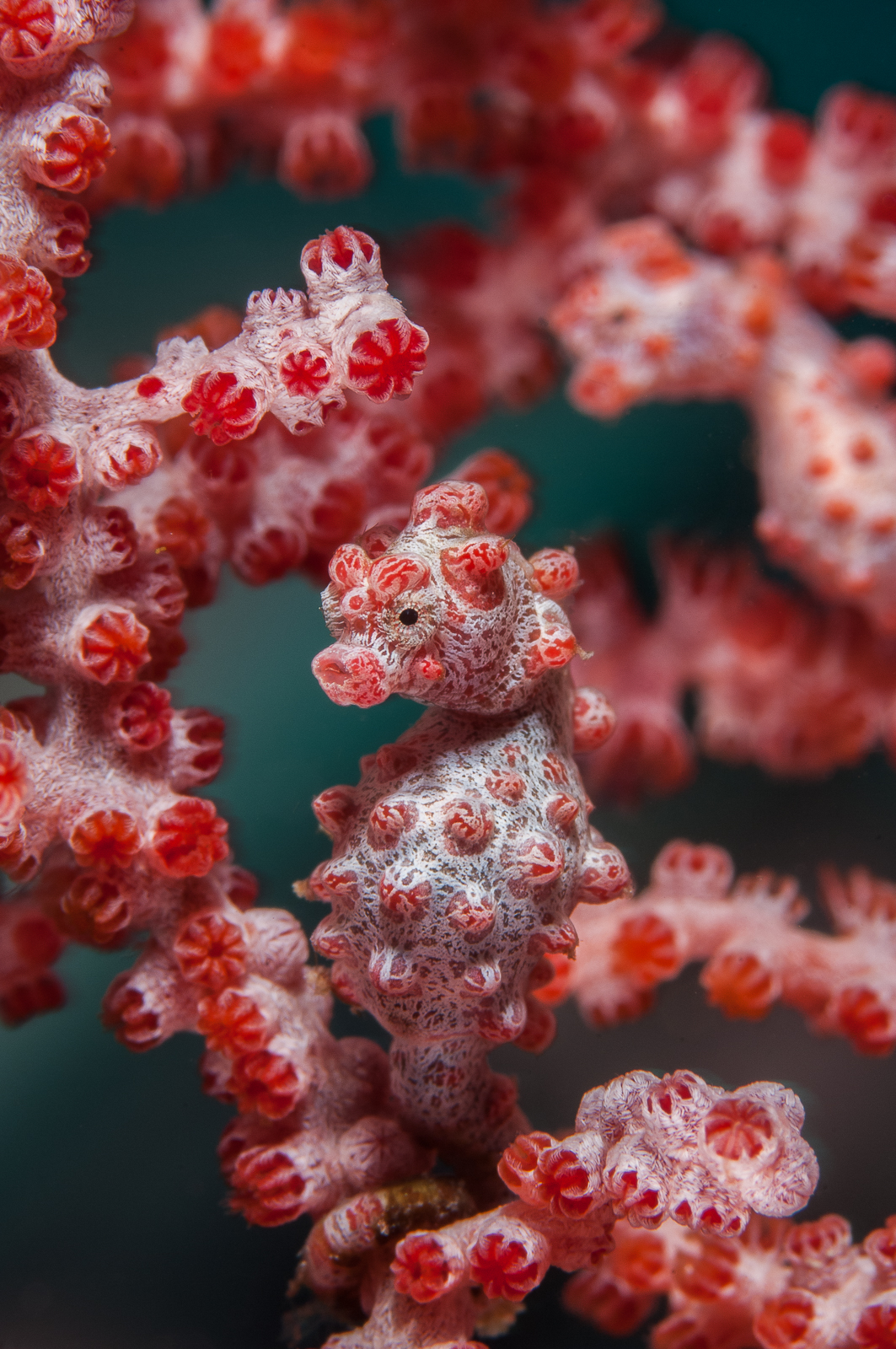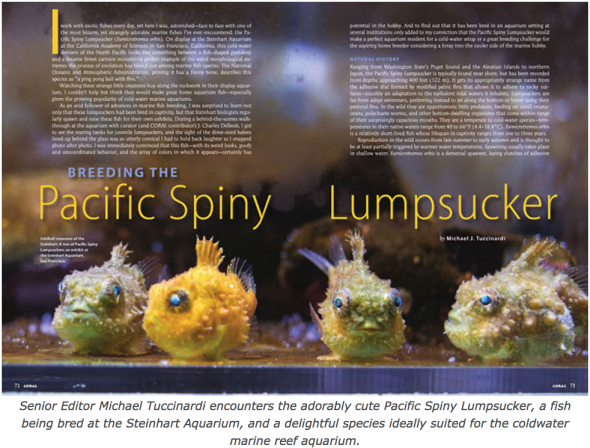
Science Friday: This Tiny Seahorse Has Mastered Its Domain
To hide in the knobby sea fans they call home, Bargibant’s pygmy seahorses have evolved exquisite camouflage
by Julie Leibach, on
The Rich Ross centric part:
“When it comes time to mate, seahorses that engage in daily greetings generally extend that ritual into a more elaborate display that ultimately says, “I’m ready!” A few years ago, biologists at the Steinhart Aquarium, part of the California Academy of Sciences, raisedH. bargibanti in captivity for 126 days, and observed the species in mating mode. The interaction appears to go something like this: A male and female first trail each other around the sea fan, getting closer and closer until they’re facing one another. “By some signal, they decide, ‘this is when it’s gonna happen,’” says Richard Ross, a senior biologist at the aquarium. The pair then levitates from the safety of their fan, tails intertlaced, and the female deposits her eggs in about 30 seconds. They descend after that, but may repeat the process once or twice.”
The entire article:

Pygmy Seahorses: Masters of Camouflage
By Joshua Cassidy, KQED Science (some footage by Rich Ross)
Alternate copy of video: https://vimeo.com/124145465
Over the summer, biologists from the California Academy of Sciences in San Francisco returned from an expedition to the Philippines with some very rare and diminutive guests, a mating pair of pygmy seahorses. The two tiny fish, each shorter than an inch and bright orange, were collected as part of a larger study of the stunning biodiversity found in the “Twilight Zone” of the ocean. It’s a relatively unexplored environment located at depths where the bright tropical sunlight barely penetrates.
Pygmy seahorses live their entire adult lives attached to a type of coral called a Gorgonian sea fan. The seahorses use their long tails to grab on to the delicately branched sea fans. But what’s really amazing is their ability to match the coral’s bright color and knobby texture. They blend in so perfectly that they are barely visible, even to a trained eye.
More people have walked on the moon than have seen a juvenile land on a sea fan.
Pygmy seahorses are nearly impossible to raise in captivity. More people have walked on the moon than have seen a juvenile land on a sea fan. Until recently, there was no record of the seahorses ever living long enough to breed in an aquarium. As a result, very little is known about them, making them extremely attractive to researchers eager to learn about the mysterious species.
One of the biggest hurdles is keeping the host sea fans alive, since the pygmy sea horses cannot live without them. Biologists Matt Wandell and Rich Ross knew this would be tough, but they had been preparing since 2011 when Bart Shepherd, Director of the Steinhart Aquarium, issued them a challenge. They were tasked with keeping the sea fans alive for three years before they could even attempt bring back the seahorses. (more…)
